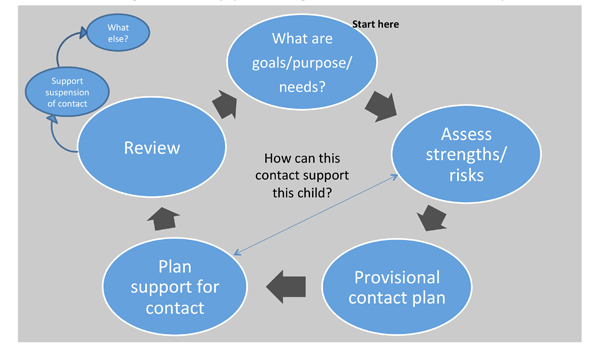Stage 1
Stage 2
Stage 3
Practice Model

Planning and supporting contact after adoption
The aim of this model is to guide practitioners through the process of making contact plans for adopted children. The principles underpinning the model are that contact should be purposeful (how contact can benefit the child is the central question); individualised (taking account of the particular needs of the child, and of the particular qualities of children, adoptive parent and birth relatives that can have a bearing on contact), and that contact is a relationship-and based process that is dynamic across time.
> Download the practice model information and guidance notes
Key Documents

> Full report - Contact after adoption: A follow up in late adolescence
> Summary leaflet of key findings for adopted young people
> Summary leaflet of key findings for adoptive parents
> Summary leaflet of key findings for birth relatives
> Summary leaflet of key findings for practitioners
People
Senior Research Associate, Norwich Medical School
 Dr Mary Beek
Dr Mary Beek
Visiting Fellow, School of Social Work
Senior Research Associate, School of Social Work
Emeritus Professor, School of Social Work
Professor, School of Social Work

)




